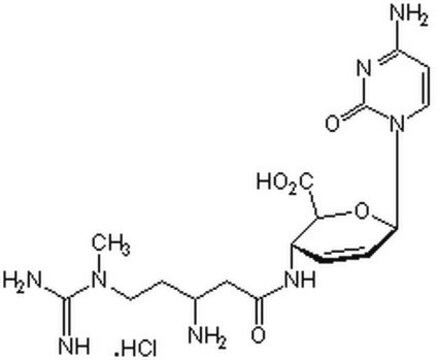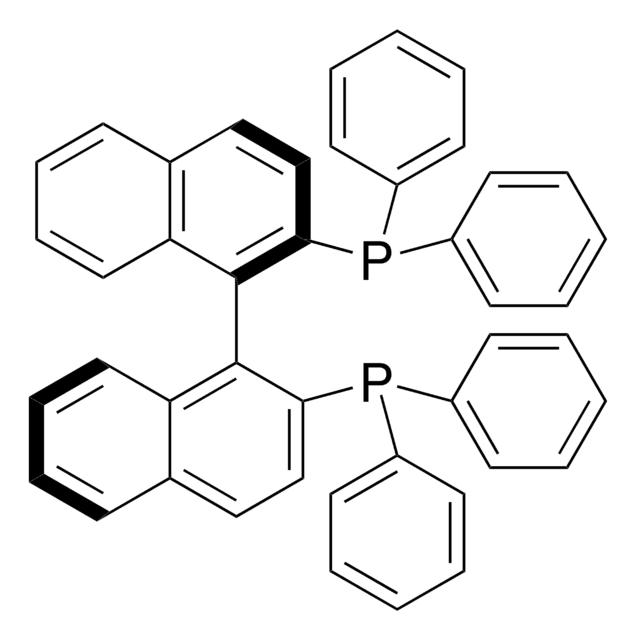15205
Blasticidina S hydrochloride
Sinónimos:
Blasticidina S
About This Item
Productos recomendados
form
powder
Quality Level
color
white to off-white
solubility
acetic acid: water: soluble, clear, colorless
antibiotic activity spectrum
fungi
application(s)
agriculture
environmental
mode of action
protein synthesis | interferes
shipped in
dry ice
storage temp.
−20°C
SMILES string
Cl[H].CN(CC[C@@H](N)CC(=O)N[C@H]1C=C[C@@H](O[C@@H]1C(O)=O)N2C=CC(N)=NC2=O)C(N)=N
InChI
1S/C17H26N8O5.ClH/c1-24(16(20)21)6-4-9(18)8-12(26)22-10-2-3-13(30-14(10)15(27)28)25-7-5-11(19)23-17(25)29;/h2-3,5,7,9-10,13-14H,4,6,8,18H2,1H3,(H3,20,21)(H,22,26)(H,27,28)(H2,19,23,29);1H/t9-,10+,13-,14+;/m1./s1
InChI key
YQXYQOXRCNEATG-ZAYJLJTISA-N
General description
Application
Biochem/physiol Actions
Packaging
Other Notes
Related product
signalword
Danger
hcodes
Hazard Classifications
Acute Tox. 1 Oral
Storage Class
6.1A - Combustible acute toxic Cat. 1 and 2 / very toxic hazardous materials
wgk_germany
WGK 2
flash_point_f
Not applicable
flash_point_c
Not applicable
ppe
Eyeshields, Faceshields, Gloves, type P3 (EN 143) respirator cartridges
Elija entre una de las versiones más recientes:
¿Ya tiene este producto?
Encuentre la documentación para los productos que ha comprado recientemente en la Biblioteca de documentos.
Los clientes también vieron
Artículos
Our lentiviral vector systems are developed with enhanced safety features. Numerous precautions are in place in the design of our lentiviruses to prevent replication. Good handling practices are a must.
Successful targeting relies on optimizing key sensitive steps in the process, including lentiviral transduction. Below are some helpful handling and titration tips from our R&D lentiviral experts.
Protocolos
You are not alone designing successful CRISPR, RNAi, and ORF experiments. Sigma-Aldrich was the first company to commercially offer lentivirus versions of targeted genome modification technologies and has the expertise and commitment to support new generations of scientists.
FACS (Fluorescence-Activated Cell Sorting) provides a method for sorting a mixed population of cells into two or more groups, one cell at a time, based on the specific light scattering and fluorescence of each cell. This method provides fast, objective, and quantitative recording of fluorescent signals from individual cells.
Nuestro equipo de científicos tiene experiencia en todas las áreas de investigación: Ciencias de la vida, Ciencia de los materiales, Síntesis química, Cromatografía, Analítica y muchas otras.
Póngase en contacto con el Servicio técnico










